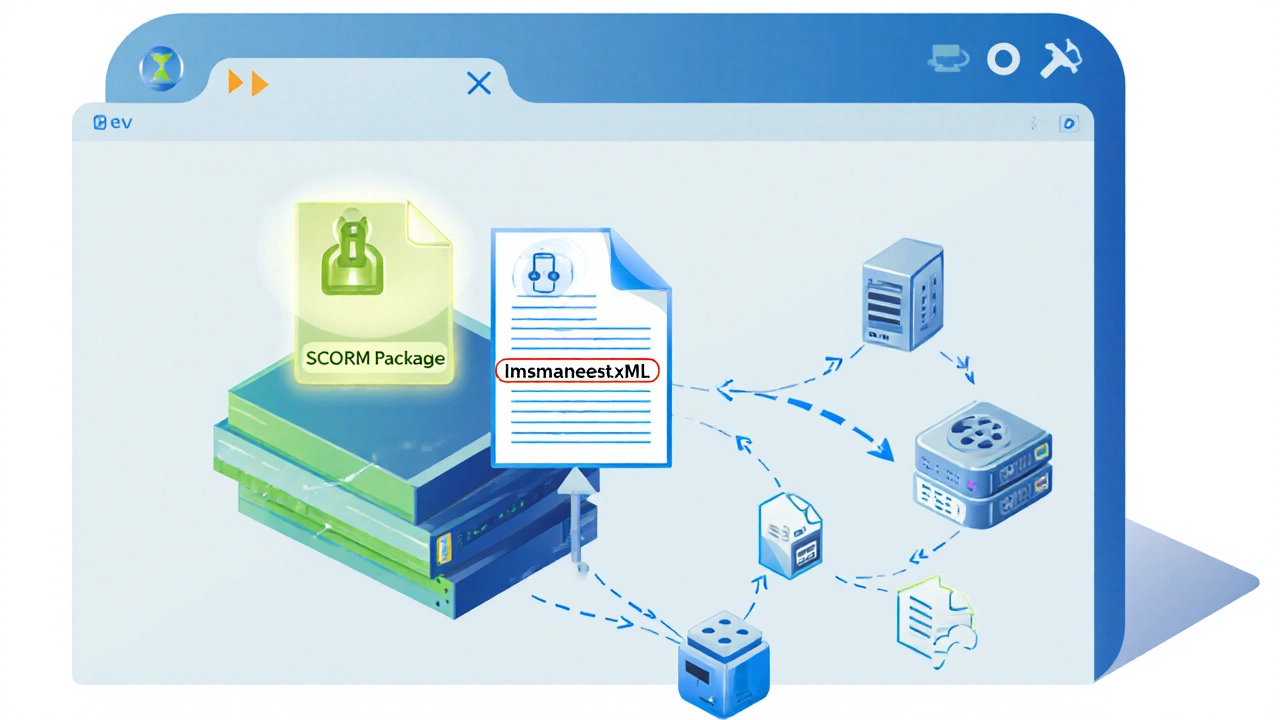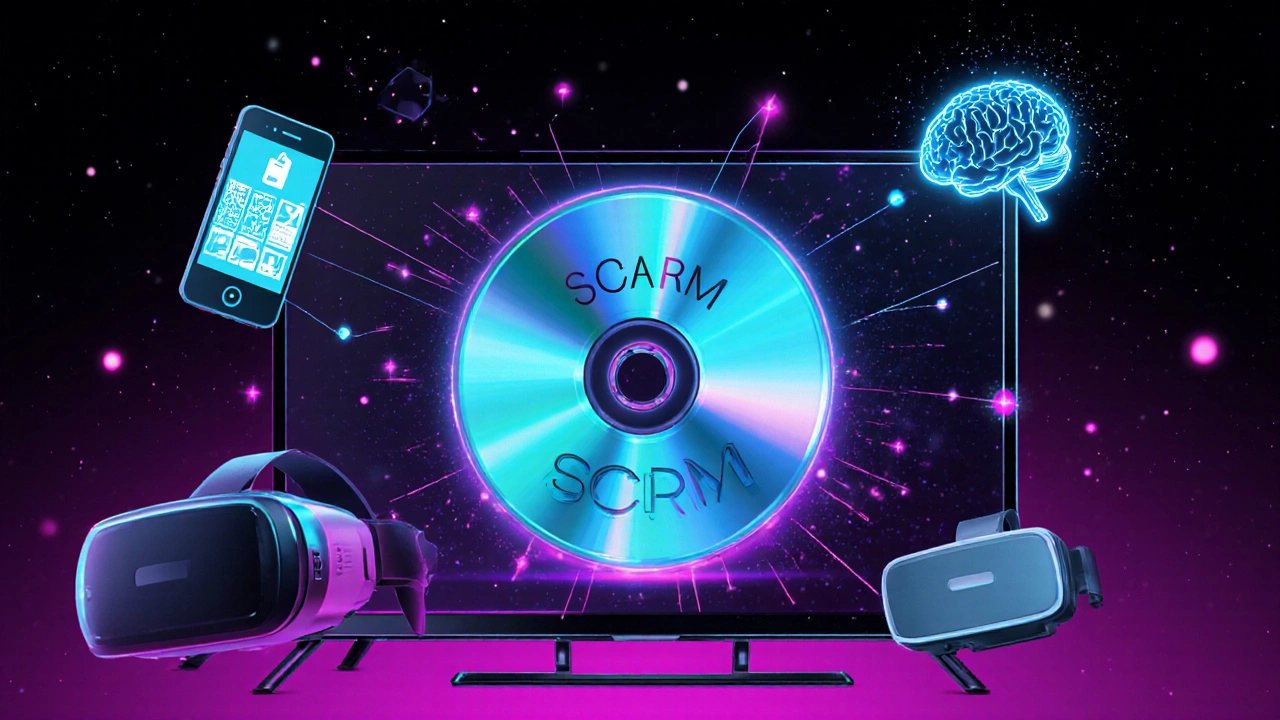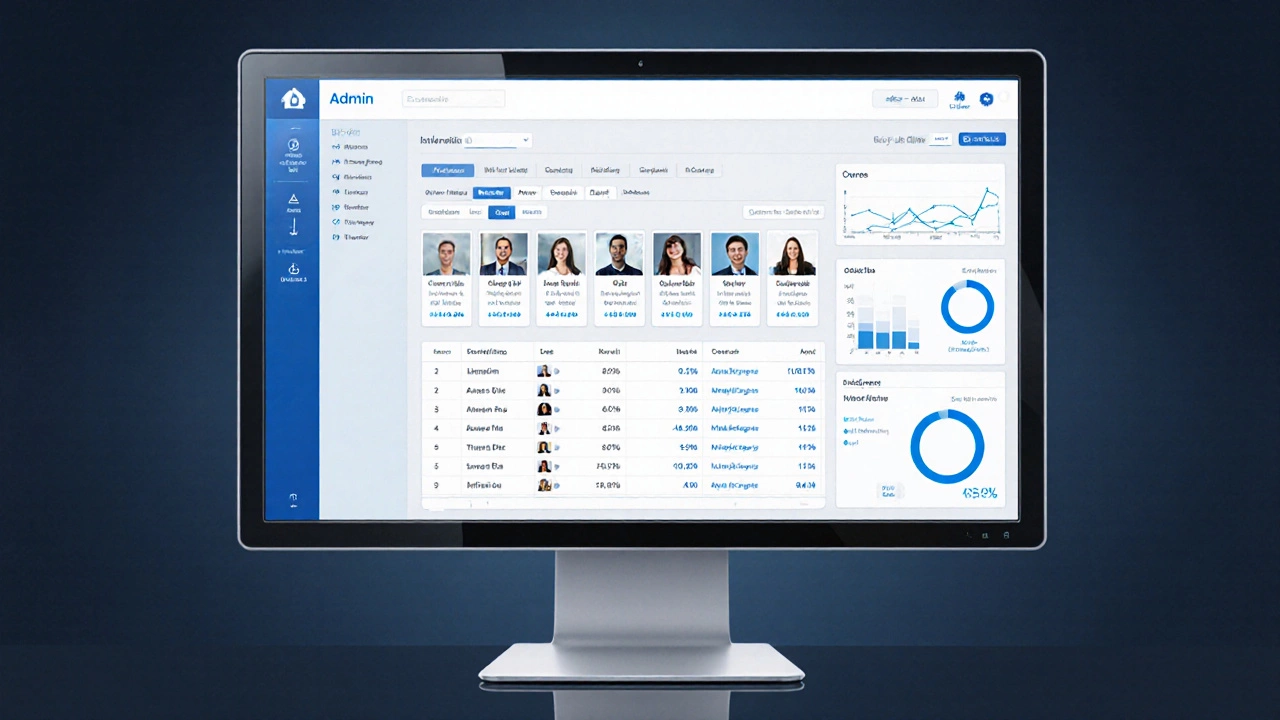LMS vs SCORM Comparison Tool
Learning Management System (LMS)
A platform that hosts, delivers, and tracks learning experiences. It manages users, courses, and generates reports for compliance or performance reviews.
- Content Hosting ✓
- User Management ✓
- Reporting ✓
- Integration ✓
Sharable Content Object Reference Model (SCORM)
Technical standards defining how e-learning content is packaged, launched, and reported. Ensures interoperability between authoring tools and LMS platforms.
- Content Packaging ✓
- Tracking ✓
- Interoperability ✓
- Version Control ✓
How They Work Together
Think of it this way:
An LMS is like a TV set, and SCORM is like a DVD that you insert. The TV can play many formats, but it needs a DVD player that understands the disc's structure.
When you upload a SCORM package to an LMS, the system reads the manifest, creates a launch link, and tracks learner interactions behind the scenes.
When to Use Each
Use SCORM When:
- You need basic pass/fail tracking
- Compliance certificates are required
- Simple course catalogs are sufficient
- Budget constraints exist
Use xAPI When:
- Tracking learning outside the LMS
- Complex analytics are needed
- Mobile apps or simulations are involved
- Real-time data is essential
Key Considerations
| Criteria | LMS | SCORM |
|---|---|---|
| Purpose | Host, deliver, and manage learning experiences | Standardize packaging and reporting |
| Scope | Platform-level | File-level |
| Users | Training managers, HR, IT admins | Instructional designers, content developers |
| Tracking Granularity | Course completion, quiz scores | Lesson-level status, interaction data |
| Compatibility | Web server, database, authentication | SCORM-aware LMS or player |
Quick Summary
- LMS is a platform that hosts, delivers, and tracks learning experiences; SCORM is a set of technical standards that package and report on those experiences.
- SCORM works *inside* an LMS - the LMS must be SCORM‑compatible to read the content.
- SCORM handles packaging, sequencing, and basic tracking; modern standards like xAPI extend tracking beyond the LMS.
- Choosing the right combo depends on your organization’s size, reporting needs, and tech stack.
What an LMS actually does
When building digital training, LMS is a Learning Management System that stores, delivers, and tracks e‑learning content for users. Most companies use an LMS to create user accounts, assign courses, generate certificates, and pull reports for compliance or performance reviews. Typical features include a content library, quiz engine, social feed, and integration points for HR or payroll systems.
Because an LMS is a full‑stack solution, it can host many content formats - videos, PDFs, SCORM packages, or newer xAPI statements - and present them through a single dashboard. In short, the LMS is the “home” where learners go to find and finish their training.
Defining SCORM and why it matters
SCORM is a set of technical standards (Sharable Content Object Reference Model) that defines how e‑learning content is packaged, launched, and reported. Developed in the early 2000s by ADL, SCORM ensures that a learning object created in one authoring tool will run the same way in any SCORM‑compliant LMS.
The standard packs content into a ZIP file with a manifest (imsmanifest.xml) that lists each learning object, its required files, and the sequencing rules. When a learner opens the package, the LMS launches it in a “wrapper” (often an iframe) that enables two‑way communication via JavaScript. This communication reports data such as completion status, score, and time spent.

Core differences at a glance
| Aspect | LMS | SCORM |
|---|---|---|
| Purpose | Host, deliver, and manage learning experiences | Standardize packaging and reporting of learning objects |
| Scope | Platform‑level (covers users, courses, analytics) | File‑level (defines how a single course behaves) |
| Typical Users | Training managers, HR, IT admins | Instructional designers, content developers |
| Tracking granularity | Course completion, quiz scores, login history | Lesson‑level status, interaction data, time on page |
| Versioning | Continual updates, multi‑tenant hosting | SCORM 1.2, SCORM 2004 2nd/3rd/4th editions |
| Compatibility needs | Web server, database, authentication system | SCORM‑aware LMS or player |
| Future‑proofing | Can adopt newer standards (xAPI, LTI) | Limited to built‑in sequencing; newer standards needed for advanced analytics |
How the two work together
Think of the LMS as a TV set and SCORM as the DVD that you insert. The TV can play many formats, but it needs a DVD player that understands the disc’s structure. When you upload a SCORM package to a LMS, the system reads the manifest, creates a launch link, and tracks learner interactions behind the scenes.
If the LMS isn’t SCORM‑compatible, the content will either fail to launch or won’t report any data. That’s why most commercial LMSs advertise “SCORM 1.2 & 2004 support” as a baseline feature.
When to stick with SCORM and when to look beyond it
SCORM still dominates corporate training because its packaging is simple and most authoring tools (Articulate Rise, Adobe Captivate, iSpring) export it by default. If your organization only needs basic pass/fail tracking, compliance certificates, and a single‑language course catalog, SCORM + an LMS is a cost‑effective combo.
However, SCORM has limitations:
- It can’t capture learning that happens outside the LMS (mobile apps, simulations, VR).
- Sequencing rules are rigid; complex branching often requires custom JavaScript.
- Data is limited to a handful of predefined fields (cmi.core.*).
For richer analytics, consider xAPI (also called Tin Can API). xAPI records any learning event to a Learning Record Store (LRS), allowing you to track on‑the‑job performance, social learning, or offline simulations. Some LMSs now embed an LRS, offering a hybrid approach: SCORM for legacy courses and xAPI for newer, experiential modules.
Choosing the right LMS for SCORM support
Not all LMSs are built the same. Here are five criteria to test before you commit:
- SCORM version support: Does it handle 1.2 and the latest 2004 4th edition?
- Import workflow: Can you drag‑and‑drop a package, or does it require XML tweaking?
- Reporting depth: Does the admin console show lesson‑level scores, or only course completion?
- Scalability: Will it handle thousands of concurrent users without lag?
- Future‑proof extensions: Is there native xAPI or LTI support for third‑party tools?
Platforms like Moodle, TalentLMS, and Docebo all advertise full SCORM compliance, but their UI, pricing, and extensibility differ greatly.

Common pitfalls and how to avoid them
Pitfall 1 - Mis‑labelled zip files. A SCORM package must contain a properly named imsmanifest.xml at the root. If the file sits inside a sub‑folder, the LMS won’t recognize it.
Pitfall 2 - Browser security blocks. Modern browsers may block the iframe that runs the SCORM player if the LMS is served over HTTP while the content loads over HTTPS (or vice‑versa). Always serve both from the same protocol.
Pitfall 3 - Ignoring version differences. SCORM 2004 adds sequencing but also introduces stricter runtime error handling. Test your content in the exact version your LMS supports before a full rollout.
Pitfall 4 - Over‑reliance on SCORM for analytics. If you need data like “time spent on a discussion forum” or “completion of a real‑world task”, SCORM won’t capture it. Pair it with xAPI or embed custom JavaScript that pushes data to an LRS.
Practical checklist for a smooth LMS‑SCORM integration
- Confirm LMS version and supported SCORM editions.
- Export the course as a SCORM package (ZIP) from your authoring tool.
- Validate the package with a free SCORM Cloud tester; fix any manifest errors.
- Upload the ZIP to the LMS and run a test user through the full flow.
- Check that completion status, score, and time‑on‑page appear in the LMS reports.
- Document any custom JavaScript used for extra tracking; plan migration to xAPI if needed.
Future trends: beyond SCORM
While SCORM remains the backbone of many corporate learning programs, three trends are reshaping the landscape:
- Micro‑learning bundles delivered via mobile apps, often using xAPI to record fragmented learning events.
- Adaptive learning engines that personalize content pathways; these require real‑time data that SCORM cannot supply.
- Immersive experiences (AR/VR) that output data in proprietary formats, yet many vendors are creating SCORM wrappers to bridge legacy LMSs.
If you’re building a new learning ecosystem, treat SCORM as a reliable “baseline” and layer newer standards on top as your reporting needs grow.
Frequently Asked Questions
Does every LMS support SCORM?
No. While most commercial LMSs advertise SCORM compatibility, some niche or open‑source platforms may only support older versions or require add‑ons. Always check the product specs before purchasing.
Can I use SCORM without an LMS?
You can launch a SCORM package in a standalone player, but you’ll lose the tracking and reporting features that an LMS provides. Some authoring tools include a basic player for preview purposes only.
What’s the difference between SCORM 1.2 and SCORM 2004?
SCORM 1.2 offers basic launch and status tracking. SCORM 2004 adds sophisticated sequencing, navigation rules, and deeper data model fields, allowing more complex course flows.
Should I invest in xAPI instead of SCORM?
If your training stays inside a traditional LMS and you only need pass/fail data, SCORM is sufficient and cheaper. If you want to capture learning that happens on mobile, in simulations, or on the job, xAPI offers the flexibility you need.
How do I troubleshoot a SCORM package that won’t launch?
First, validate the ZIP with a SCORM testing tool to catch manifest errors. Next, verify that the LMS supports the package’s SCORM version. Finally, check browser console logs for JavaScript errors that might block the communication bridge.





Write a comment